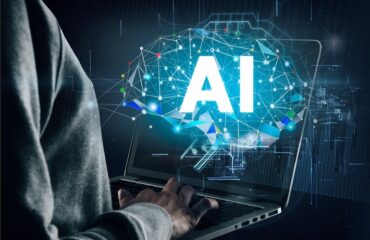
With digital transformation coming at utilities from all angles, how, where and from who you get your energy will change. Here are some of the challenges.
Energy and utility companies are facing an industry future that is rapidly diversifying, decentralizing and digitizing.
Segments like renewables are accelerating faster than predicted, customer experience (CX) and user experience are forcing innovation, and a new generation of consumers are demanding more diversified energy, business and payment models.
I believe that five key changes will define the new normal for energy and utility companies. How you respond to these will determine your survival or your downfall.
Change #1: By 2040, two-thirds of the global energy market will be in renewables, driving an urgent race to diversify.
By 2040, the equivalent of a whole new China and India will have been added to the planet’s global energy demand, a 30 percent increase from today. Where will this power come from? According to the International Energy Agency, 40 percent of the plant’s energy demands will be from renewables. This shift will also be driven, the report says, by ‘enormous efficiency improvements on the supply side’.
See also: Can IoT provide utilities with new business models?
To capitalize on this, energy and utility companies need to have an eye on plans for diversification. In fact, if you haven’t starting planning yet, you might be too late. As companies compete to capture the “greenbacks” of our proactive, eco-conscious consumers, companies should also plan to focus more on smart grid management and customer service.
For example, National Grid Smart’s solutions support the new smart meter initiative which is expected to fit 26 million domestic smart meters in the U.K. by 2020 – powering national energy efficiency.
Using a comprehensive software suite that combines key business functions such as ERP, EAM, field service management, MRO and more, National Grid is now able to offer its energy suppliers a fully-managed smart meter service, with asset financing and installation, managed logistics and customer communications. They can also feed critical data to engineers in the field. This example shows how advanced capabilities can deliver a powerful competitive edge.
Change #2: By 2023, 75 percent of utility assets will be digitally connected – but how they’re integrated will be crucial.
For consumers, diversification means choosing between traditional or renewable energy sources, choosing how much they pay for it and even deciding if they can store energy and sell it back. For energy and utility companies, diversification means more complexity and a need to connect data across the entire business to manage all these new moving parts as well.
One example of integrating and using data to thrive is a company in the offshore drilling sector that operates one of the youngest but most advanced fleets of oil rigs in the industry. All their rigs are run as individual business units earning revenue in locations as far apart as the Gulf of Mexico, Africa and Southeast Asia. In their situation, they needed a fully integrated system to increase efficiency, quality and reduce operational costs. The company rolled out IFS Applications to its global locations, integrating six separate software systems and closing enormous gaps in visibility to critical data.
Change #3: By 2024, 25 percent of extraction and mining companies will have created digital twins.
Digital twins are digital representations of physical assets, mainly used in the context of the Internet of Things (IoT). Digital twins connect sensors to visualize the state of an asset, often represented by a 3D model. Of course, getting real-time sensor data into, for example, a control room and getting assets into 3D models isn’t all that new. However, it has been difficult getting this information beyond the control room. The rise of IoT, the cloud and sheer computing power enables us to enter a new area where real-time sensor data and 3D models are combined.
Digital twin key driver #1: Integration. The IDC FutureScape Mining report predicts that by 2024, a quarter of all mining companies will have created digital twins integrating ‘geospatial, geological and mine operation insights,’ which will lead to better business planning, execution and maintenance. In this case, overcoming the challenges brought about by siloed data will be a key driver of digital twins.
Digital twin key driver #2: Automation. As mining reserves shrink, companies are exploring ever tougher, more remote terrain. In harsh environments like these, automated equipment delivers multiple benefits. On-site robots are more cost-effective, resilient and able to operate for longer hours, more accurately even in severe conditions.
With integration across key technology systems, automated assets are perfect for digital twin simulations, too, and can significantly reduce risk. From planning to development to production and maintenance – digital twins allow every dollar to be accounted for and measured before any risk is undertaken. If you’re thinking about leveraging a digital twin strategy, start by ensuring the data and systems that will feed into your digital twins are connected and play well with each other. This may require upgrading or overhauling some of your asset management systems.
Change #4: Energy and utility retailers will double their AI investments this year as they battle to the boost customer experience.
The customer is priority No. 1 in the energy and utility sector right now. The competition to enhance CX by improving convenience, customization and control is intensifying. To address this, many retailers are looking to double their investments in artificial intelligence (AI). With AI, energy and utility providers can offer a more retail-like CX model, one where customers can get the right personalized energy solution, on the channel they want, in just a few clicks.
Take HomeServe in the U.K. They install gas residentially and carry out approximately 300,000 calls and 200,000 visits a year. When they installed an AI-powered omni-channel contact center solution, it integrated and included all customer, asset, field-service scheduling and parts information. HomeServe contact center agents no longer had to search through multiple screens or systems for different data; all the contextual data they needed to resolve customer requests was delivered to the agent. This transformed the experience that agents were able to offer customers.
For organizations just starting their digital transformation journey, the HomeServe story is one to learn from. They were successful because they were able to integrate all supply and enterprise data into one system. Being able to connect the dots, from the field to the consumers’ home, is non-negotiable if you’re going to win customer engagement. Again, AI will be a powerful driver for this success, but only with the right integration.
Change #5: Oil and gas will invest more in assets and exploration again as demand outstrips supply.
Investment and exploration will rise again as demand for both oil and gas will start to outstrip supply. This will lead to new capital investments in assets. Price Waterhouse Cooper’s 2018 Strategic Report shows how global capital expenditure in oil and gas dropped nearly 45 percent between 2014 and 2016, but will rise 6 percent year-over-year in the medium term, as evidenced by a string of major projects being greenlighted:
- Gulf of Mexico:BP goes ahead with Phase II of floating production platform Mad Dog
- North Sea:Shell to launch ‘Penguins’ field, its first new-staff installation in almost 30 years
- Peru and Cote d’Ivoire: Tullow wins offshore production license; BP & Kosmos begin exploration off the shore of Cote d’Ivoire
- Ghana, Namibia, offshore Mauritania: ExxonMobil to enter exploratory phase
These new investments are heartening. But will it be enough? Despite shale oil currently performing well, its severe environmental impact makes it unpredictable moving forward. Soon oil demand will outstrip supply. Exploration, extraction and supply will all, therefore, need to stay collaborative, standardized, agile and most of all – cost-efficient. As new assets and projects come online, energy and utility companies must have true visibility into all the critical data of these new projects in order to justify investment and track their return.
As outlined above, these five changes will begin to frame the new normal for energy and utility companies. If a business can diversify, connect its utilities assets, leverage a digital twin strategy, double its AI investments, and maintain visibility into critical data on new projects, it will ensure survival in an industry that is rapidly changing.
About the author
Colin Beaney is the global industry director for Energy, Utilities & Resources at IFS, where he has worked for nearly 20 years. He has been involved in implementing and project managing IFS software into many project and asset-intensive organizations in Europe and worldwide. These cover industries including energy, utilities, pulp & paper, aviation and defense.





























